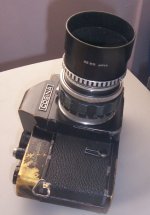R
ruben
Guest
I would like to post a simple and general question about estimating if a hood is appropriate or not.
Let's take for example an Helios standard lens, just for the example. If I mount a hood and I look through the rear left side of the lens towards the front right of the lens, and I do not see the hood borders: would this mean that hood will not vignette (and vice versa) ?
Thanks in advance
Ruben
Let's take for example an Helios standard lens, just for the example. If I mount a hood and I look through the rear left side of the lens towards the front right of the lens, and I do not see the hood borders: would this mean that hood will not vignette (and vice versa) ?
Thanks in advance
Ruben


